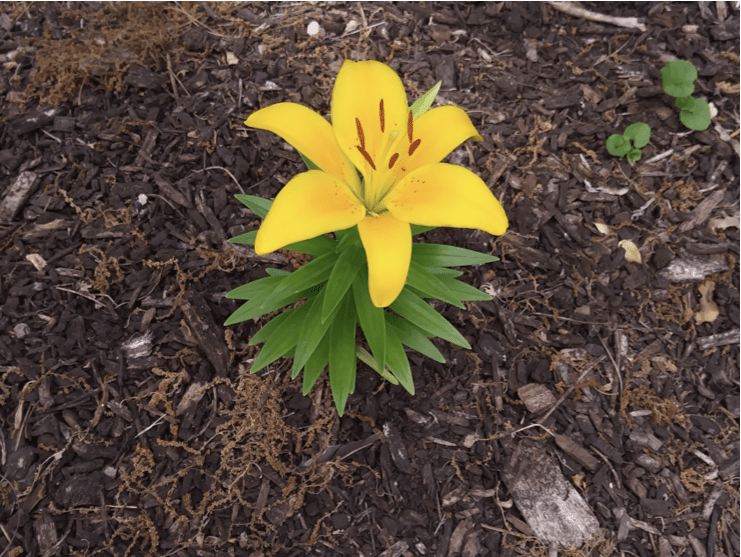Mulch has been used for centuries to improve soil quality and protect plants. It is a layer of material applied to the soil surface, and it can be made from a variety of natural or synthetic materials.
The practice of mulching dates back to ancient civilizations, and it has evolved over time to become an essential component of modern horticulture.
Mulch Background: The Origin and Meaning of Mulch
The word "mulch" comes from the Old French word "muche," which means "soft, rotten wood." It is believed to have been first used in this sense in the 16th century, and it referred to the use of soft, decomposed wood as a protective layer around plants.

Over time, the meaning of the word "mulch" has expanded to include a variety of materials used for the same purpose, including straw, leaves, bark, pine needles, and even plastic or rubber. Today, "mulch" is generally defined as any material applied to the surface of soil to protect and enrich it.
Mulch: From Ancient Times to Modern Gardening
Mulching has played an important role in gardening practices for thousands of years. From ancient civilizations to modern horticultural practices, its uses have evolved but remain vital.
Ancient Uses of Mulch
The earliest recorded use of mulch dates back to ancient Egyptian times, where it was used to protect plants from the hot desert sun. It was applied around the base of plants as a layer of protective material that could help to keep the soil cooler and more moist.
Mulch was also used to suppress weeds and reduce the amount of water needed for irrigation. In ancient Greek and Roman gardens, it was often made from materials such as straw, hay, or leaves.
Mulch in the Middle Ages and Beyond
During the Middle Ages, mulch was used primarily for functional purposes, such as preventing erosion and conserving moisture. It was not until the 18th and 19th centuries that mulch began to be used more for aesthetic purposes, with the introduction of decorative mulches made from materials such as bark or wood chips.
Mulch in Modern Horticulture
As horticultural practices developed in the 20th century, mulch became an increasingly important tool for improving soil structure, suppressing weeds, and conserving water.
Today, mulch is used in a wide range of horticultural settings, from small home gardens to large commercial nurseries.

Horticultural processes are techniques and practices used in the cultivation and care of plants. These processes can include a wide range of activities, such as planting, pruning, watering, fertilizing, and mulching.
Horticultural processes are often used to improve the growth and health of plants, and they can be applied to a wide range of plant types, including flowers, vegetables, fruit trees, and ornamental plants.
Natural vs. Synthetic: Types of Mulch
There are many types of mulch available, each with its own unique properties and benefits:
- Organic mulches, such as wood chips, leaves, or straw, can improve soil structure and fertility as they decompose.
- Inorganic mulches, such as plastic or rubber mulch, do not provide nutrients to the soil but can be effective at controlling weeds and conserving moisture.
Mulch Is a Gardening and Landscaping Must-Have
Mulching is an important aspect of modern horticulture, and it has a rich history dating back to ancient civilizations. From its humble beginnings as a tool for protecting plants from the elements, mulch has evolved into an essential component of gardens and landscapes around the world.
Whether used for functional or decorative purposes, mulch is an important tool for improving soil quality, suppressing weeds, and conserving moisture.
For more information about mulching, another blog in The Basics series covers topics like mulch purpose and when to mulch.
Buy Mulch Online from Mulch Mound
Buying mulch online isn't always easy. Factors like shipping costs, quality uncertainty, limited customization, delivery timing, and inaccurate amounts can make what should be a convenient experience challenging.
That's why at Mulch Mound, we work hard to make your online mulch-buying experience as smooth and hassle-free as possible. If you're in the Akron, Ohio area and looking for reliable local mulch delivery, we'll bring your mulch and other landscaping materials straight to your door.
For other locations we serve in Ohio, visit our Ohio mulch locations page.
Need help figuring out how much mulch you need? Our mulch calculator makes the estimates easy for you.
Mulch: Frequently Asked Questions
What is mulch?
Mulch is a protective layer you add to the surface of the soil to help keep your plants healthy, conserve moisture, and even improve soil quality over time.
What is mulching?
Mulching is the act of spreading mulch around your plants. The goal is to encourage healthier growth and maintain soil quality.
What is mulch used for?
Mulch serves several purposes—lock in moisture, suppress weed growth, regulate soil temperature, and improve the soil's overall health.
Where does mulch come from?
Mulch can come from various natural or synthetic materials, such as wood chips, grass clippings, leaves, straw, plastic sheeting, or rubber.
What happens to mulch over time?
If you're using organic mulch, it will break down over time and enrich the soil with nutrients. Inorganic mulch like plastic or rubber doesn't decompose and remains on the soil.
What is mulch made of?
Mulch can be organic—like wood chips, bark, straw, or leaves—or inorganic, like plastic or rubber.
What are the benefits of mulch?
Mulch does a lot of good! It helps retain moisture, stop weeds from taking over, regulate soil temperatures, improve soil quality, and even prevent erosion. Plus, it makes your landscapes and gardens look neat and polished.
